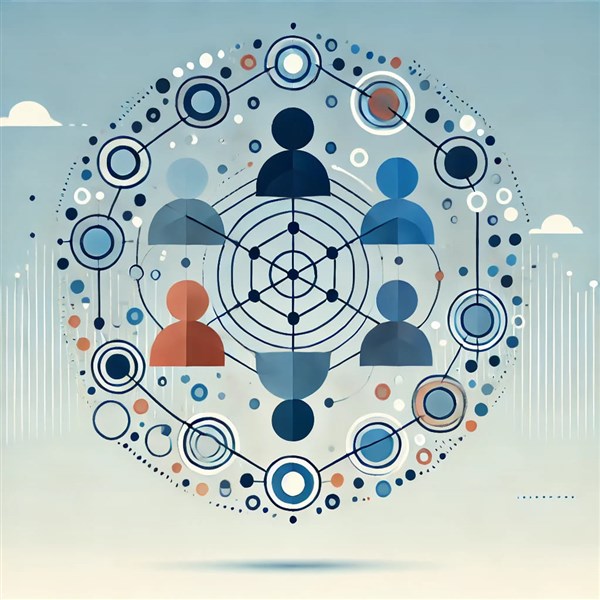
In today’s fast-paced and interconnected workplace, effective communication is more crucial than ever. Organizations that prioritize communication often see increased productivity, employee satisfaction, and overall team effectiveness. One of the most effective ways to foster better communication skills among team members is through team building training. This blog explores the relationship between team building exercises and improved communication, highlighting how these activities can create an environment where open dialogue and collaboration thrive.
The Importance of Communication in Teams
Effective communication is the backbone of any successful team. It enables team members to share ideas, provide feedback, and express concerns. Strong communication fosters trust and rapport among colleagues, which is essential for collaboration. Poor communication, on the other hand, can lead to misunderstandings, reduced morale, and a decline in productivity.
Key Aspects of Communication in Teams:
- Clarity: Clear communication ensures that everyone understands their roles, responsibilities, and expectations. Miscommunication can lead to errors and conflicts.
- Feedback: Open lines of communication allow team members to give and receive constructive feedback, which is vital for personal and professional growth.
- Conflict Resolution: Effective communication skills enable teams to address conflicts promptly and resolve issues before they escalate.
- Team Cohesion: Communication fosters a sense of belonging and teamwork, essential for maintaining a positive workplace culture.
The Role of Team Building Training
Team building training involves activities designed to improve interpersonal relationships and develop teamwork skills. These exercises often require collaboration, problem-solving, and open communication, making them ideal for enhancing communication skills among team members. Here’s how team building training contributes to better communication:
1. Creating Safe Spaces for Expression
Team building activities often take place in relaxed and informal settings, allowing participants to feel more comfortable expressing their thoughts and opinions. This environment encourages team members to share their ideas without fear of judgment.
Example Activities:
- Ice Breakers: Fun ice-breaking exercises can help team members get to know each other better, breaking down barriers to communication.
- Trust Exercises: Activities that focus on trust-building allow individuals to feel secure in sharing their thoughts and vulnerabilities.
2. Encouraging Active Listening
Effective communication is not just about speaking; it also involves active listening. Team building training teaches participants the importance of listening to understand rather than listening to respond.
Activities Promoting Active Listening:
- Listening Circles: In this exercise, team members take turns sharing their thoughts while others practice listening without interrupting. This helps cultivate respect and understanding.
- Role Reversal: Team members switch roles during discussions, forcing them to listen and respond to others’ perspectives actively.
3. Enhancing Non-Verbal Communication Skills
Communication is not solely verbal; non-verbal cues such as body language, facial expressions, and tone of voice play a significant role in how messages are received. Team building training often emphasizes the importance of non-verbal communication.
Non-Verbal Communication Activities:
- Charades: This classic game requires participants to convey messages without words, helping them recognize and interpret non-verbal signals better.
- Body Language Workshops: Sessions focused on understanding body language can enhance awareness of non-verbal communication in the workplace.
4. Fostering Collaboration and Teamwork
Many team building exercises are designed to require collaboration and teamwork, compelling team members to communicate effectively to achieve common goals.
Collaborative Activities:
- Problem-Solving Challenges: Teams work together to solve puzzles or complete tasks, necessitating communication and collaboration to succeed.
- Group Projects: Working on a shared project allows team members to practice communication in a real-world context, applying the skills learned during training.
5. Building Trust Among Team Members
Trust is fundamental for effective communication. Team building training helps establish trust among team members, making them more likely to communicate openly and honestly.
Trust-Building Activities:
- Trust Falls: Classic trust exercises where one person falls backward, relying on teammates to catch them, foster trust and reliance on each other.
- Shared Experiences: Engaging in activities that require vulnerability, such as sharing personal stories, can strengthen interpersonal bonds and trust.
Long-Term Communication Improvements
The benefits of team building training extend beyond the activities themselves. Teams that engage in regular training are likely to experience long-term improvements in communication. Here’s how:
- Improved Relationships: As team members become more comfortable with each other, they build stronger relationships, leading to increased collaboration and communication.
- Increased Engagement: When team members feel connected and understood, they are more likely to engage actively in discussions and contribute their ideas.
- Cultural Shift: Organizations that prioritize team building and communication create a culture where open dialogue is encouraged, leading to more innovative ideas and solutions.
Implementing Effective Team Building Training
To reap the full benefits of team building training, organizations must implement effective programs that focus on communication. Here are some tips for successful training:
- Tailor Activities to Team Needs: Identify specific communication challenges within the team and choose activities that address those needs.
- Make it Regular: Incorporate team building training as a regular part of the workplace culture, not just a one-time event.
- Encourage Reflection: After each training session, allow team members to reflect on what they learned and how they can apply those skills in their daily interactions.
- Provide Continuous Support: Reinforce the skills learned in training by providing ongoing support and resources, such as workshops or coaching sessions.
Conclusion
In conclusion, team building training plays a pivotal role in enhancing communication skills among team members. By fostering a safe environment for expression, encouraging active listening, improving non-verbal communication, and building trust, organizations can significantly improve interpersonal relationships within teams. The long-term benefits of effective communication extend beyond individual teams, contributing to a positive workplace culture and overall organizational success. Investing in team building training is not just about improving skills; it’s about creating a thriving environment where collaboration and innovation can flourish.
Teamwork training courses focus on improving team dynamics by enhancing communication skills. They instill the importance of each member's role and how effective communication can lead to better understanding and teamwork.
At Koenig Solutions, a leading IT training company, we offer comprehensive team building training courses that enhance communication skills. Our expert instructors provide hands-on training that fosters team collaboration, development, and teamwork. Invest in our training courses and take your team communication skills to the next level.







COMMENT